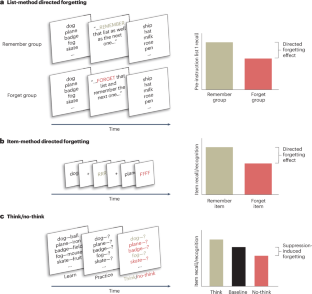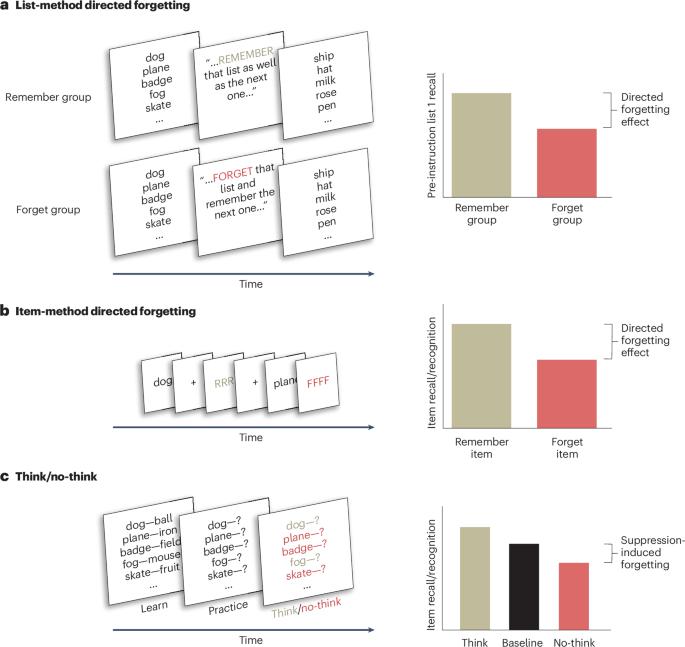Active intentional and unintentional forgetting in the laboratory and everyday life
IF 16.8
Q1 PSYCHOLOGY, MULTIDISCIPLINARY
引用次数: 0
Abstract
Forgetting can result from passive or active processes. Active forgetting includes purposefully trying to forget or retrieve competing information. Knowledge about active forgetting in humans is largely derived from controlled laboratory experiments, but similar forgetting occurs in everyday settings. In this Review, we discuss two major categories of active forgetting: one in which a person aims to forget (intentional forgetting), and the other in which a person does not (unintentional forgetting). In the laboratory, intentional forgetting occurs when a person forgets information after being directed to do so. Outside the laboratory, intentional forgetting occurs when unwanted information is forgotten volitionally, such as an incorrectly stated phone number or an upsetting experience. Unintentional forgetting in the laboratory occurs when retrieving information from memory actively induces the forgetting of related information. Unintentional forgetting outside the laboratory can also be trivial, such as which pumpkin your child selected at the pumpkin patch, or consequential, such as forgetting which jacket was worn by a perpetrator when witnessing a crime. We review efforts to map laboratory results onto everyday forgetting and make recommendations for future research, addressing everyday forgetting as well as clinical applications. Forgetting can be an intentional act or an unintentional side effect of other memory processes. In this Review, Fawcett et al. describe intentional and unintentional forgetting in laboratory and real-world settings, highlight alignment across these traditionally siloed research areas, and explore the role of forgetting in certain clinical conditions.


实验室和日常生活中的主动有意遗忘和无意遗忘
遗忘可以是被动的,也可以是主动的。主动遗忘包括有目的地尝试遗忘或检索竞争信息。有关人类主动遗忘的知识主要来自实验室对照实验,但类似的遗忘也发生在日常环境中。在本综述中,我们将讨论两大类主动遗忘:一类是有目的的遗忘(有意遗忘),另一类是无目的的遗忘(无意遗忘)。在实验室中,有意遗忘是指一个人在接受指令后遗忘信息。在实验室外,有意遗忘发生在不想要的信息被自愿遗忘的情况下,例如一个错误的电话号码或一次令人不快的经历。实验室内的无意遗忘是指从记忆中检索信息时主动诱发了相关信息的遗忘。实验室外的无意遗忘也可能是微不足道的,比如您的孩子在南瓜地里选中了哪个南瓜,或者是后果严重的,比如在目睹犯罪时忘记了犯罪者穿的是哪件夹克。我们回顾了将实验室结果映射到日常遗忘的工作,并针对日常遗忘和临床应用提出了未来研究的建议。
本文章由计算机程序翻译,如有差异,请以英文原文为准。
求助全文
约1分钟内获得全文
求助全文

 求助内容:
求助内容: 应助结果提醒方式:
应助结果提醒方式:


